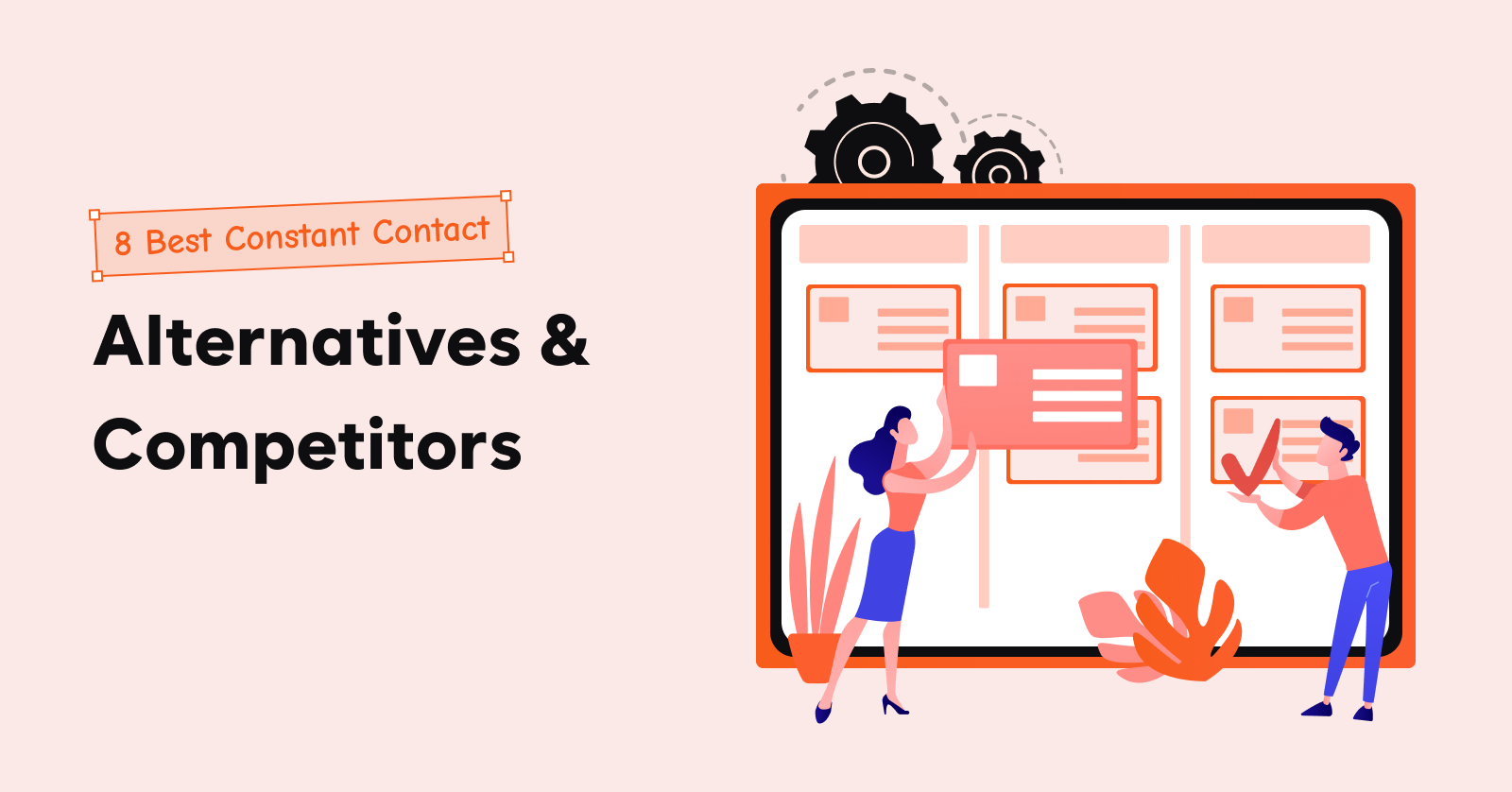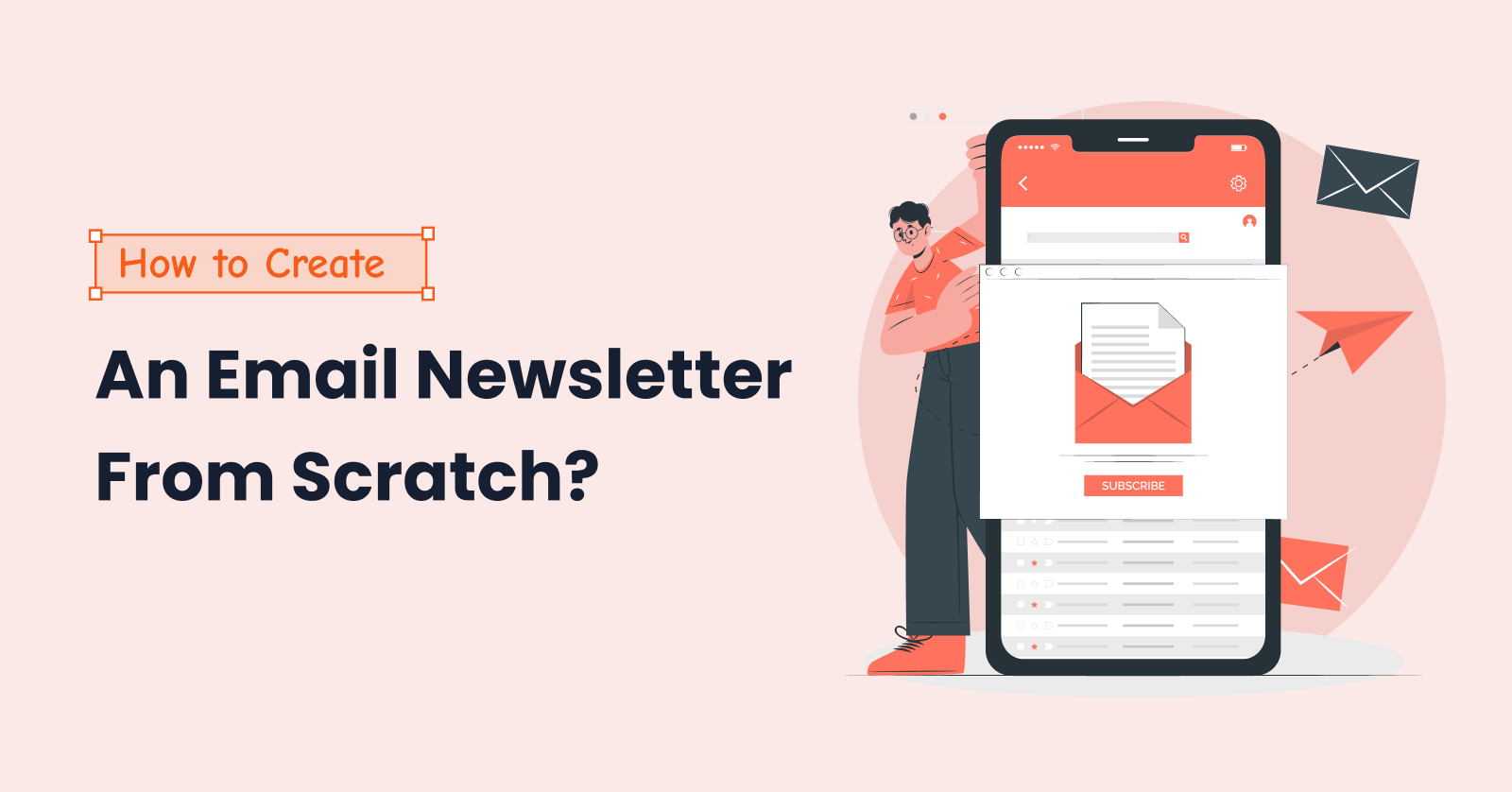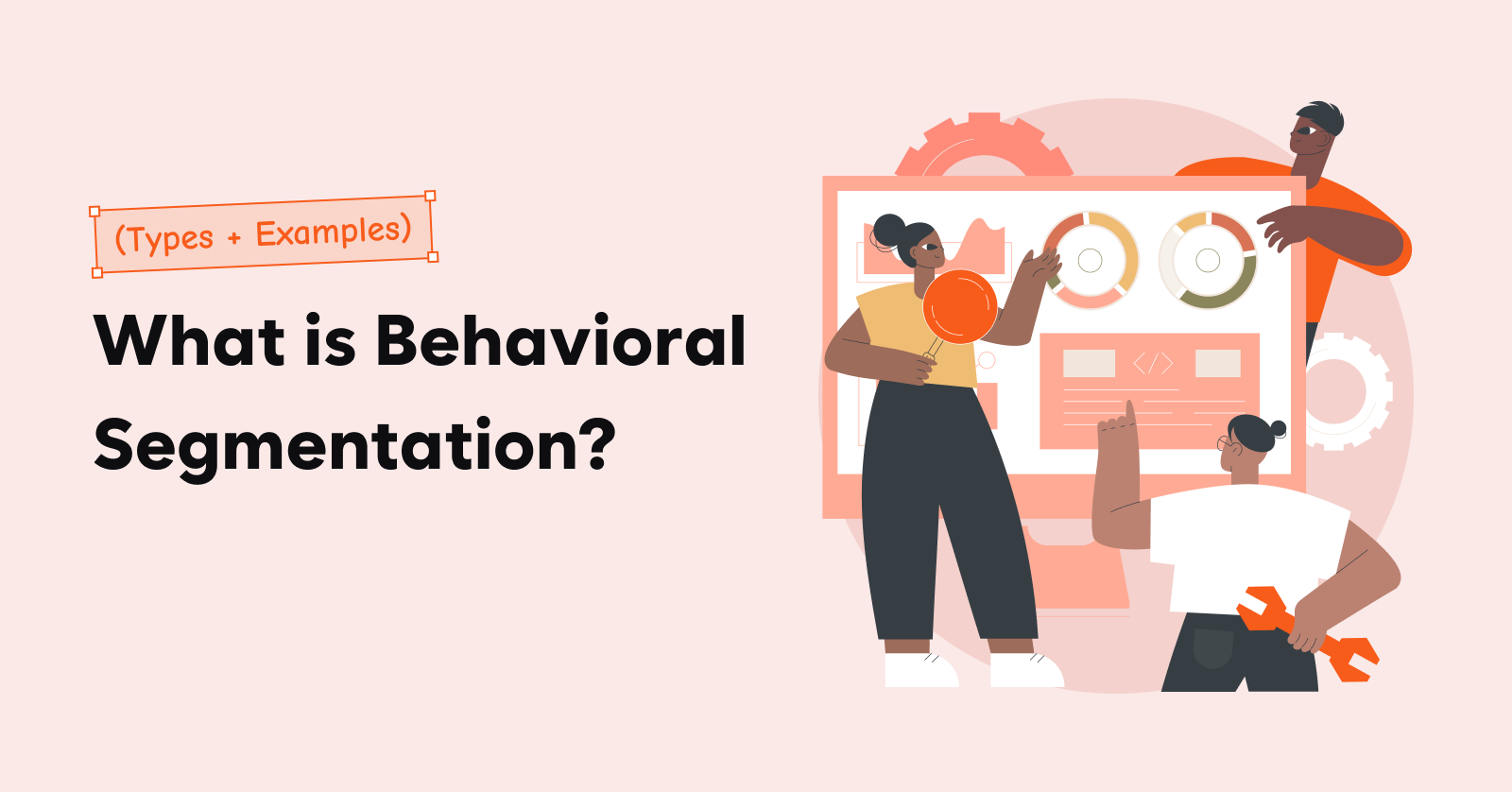Sending too many emails is the biggest challenge with our old-school email marketing. That’s why businesses are now focusing on targeted email marketing.
However, using targeted email campaigns, you can strengthen customer relationships with fewer emails. Targeted marketing strategy focuses on sending relevant messages that your audience genuinely wants to know.
Here is why targeted campaigns is a cost-effective marketing strategy:
- More conversions with fewer emails.
- Targeted emails are relevant. So people are less likely to unsubscribe and spam your emails.
- If people didn’t spam your emails, your email deliverability rate would increase. So, all the emails you send have a higher chance of catching their attention.
In this blog, we will discuss what targeted email marketing is, why it works, how you can use it for your business, and provide examples.
Send targeted emails that yield higher conversions effortlessly using Retainful’s pre-built targeted email workflows.
What is Targeted Email Marketing?
Targeted email marketing involves the practice of sending personalized, relevant emails to specific segments of customers based on their interests, preferences, demography, and past behavior.
To do it effectively, you need to collect customer data, segment your email list, and send personalized emails.
Sending targeted emails may sound easy, but implementing them is harder. The main requirement for a successful targeted campaign is a good understanding of your targeted audience list.
This way, you’re delivering exactly what your audience wants to hear.
Top 5 Benefits of Sending Targeted Emails
With regular e-commerce email marketing strategies you can reach wide audience. However to reach the right set of audience you need targeted campaigns.
Here’s how a targeted marketing campaigns can benefit your business:
1. Higher Relevance
While traditional bulk emails often lack personalization, targeted bulk marketing allows you to send personalized messages to large audience segments.
Targeted emails deliver content that addresses
- Your customer’s pain points
- Your targeted audience’s preferences
Pro tip: With behavioral targeting, you can send personalized product recommendations based on previous purchases and search history to increase relevancy.
2. Increased Engagement
People don’t want to open and engage with emails that don’t provide value to them.
But with the best targeted campaigns in your email marketing strategy, you will be sending content that provides value to your audience.
For instance, a product restock email sent to customers who showed interest in the product will have higher open rates, click rates, and engagement.
3. Better ROI
The average ROI for email marketing ranges from $36 to $40 for every $1 spent.
Targeted bulk emails has the potential to yield a higher ROI since it focuses on quality over quantity.
Moreover, using targeted campaigns will result in more conversions and sales with fewer emails, reducing the overall cost spent.
Calculate the Return on Investment for your email campaigns with the ROI calculator.
4. Higher Customer Retention
When you start sending personalized, targeted emails, your customers will feel more connected to your business.
Target your loyal customers and send them the following personalized emails to increase customer retention and the overall CLV (Customer Life Cycle Value):
- VIP Perks email
- Loyalty rewards
- Early adoption offers for product launches
- Pass to exclusive events
- Milestone Achievement Rewards
- Thank you discount emails
5. Stronger Customer Relationships
A few decades ago, people wanted products to solve their problems. Now, in addition to solutions, people prefer a personalized experience in every interaction with your business.
While generic email marketing can reach an audience, you need targeted email marketing to provide a personalized experience and strengthen your customer relationships.
Related Reading: Successful Ways to Increase Customer Retention in Your Ecommerce Store.
Types of Targeted Email Marketing
Based on the target audience of your email marketing campaign, there are 4 common types of targeted email marketing.
- Demography-targeted Email Marketing
- Geo-targeted Email Marketing
- Behavioral Targeted Email Marketing
- Marketing-based Targeted Email Marketing
1. Demography Targeted Email Marketing
Use demographic segmentation to make your emails more personalized to your target audience.
- Age
- Gender
- Marital status
- Income
- Occupation
- Education
- Place of residence, like urban and rural
Assume you own a clothing store running a flat 20% off sale. Instead of a generic email, you can send emails with gender specific visuals to increase relevancy.
This approach will make your email marketing campaigns more relevant to your target customers while reaching a large audience.
2. Geo Targeted Email Marketing
In geo-targeted email marketing, you can segment your audience based on their location.
You can use geo-targeted campaigns on different scales based on your purpose:
- For local promotions and events, focus on the target audience within a specific state.
- When running nation-specific holiday campaigns, such as American Independence Day, tailor your messaging to the country’s audience.
- Target audience of a region like APAC(Asia Pacific) or EMEA(Europe, Middle East, and Africa) for cultural nuances and language barriers.
With geo-targeted email marketing, you can:
- Provide weather-based product recommendations
- Leverage region-centric special occasions
If you’re running a discount on woolen jackets, it’s more effective to send discount emails to customers living in colder regions rather than to your entire email list. Similarly, promotions for summer cotton wear would be more relevant to customers in hotter regions.
3. Behavioral Targeted Email Marketing
Behavioral targeted email marketing targets audiences based on their purchasing and engagement behavior.
You can target audience groups based on the following behaviors:
- Past Interactions: How they have responded to your emails and messages
- Purchase History: The products your customers purchased.
- Engagement Level: Whether they often open your emails or click on links.
- Browsing Activity: The products or pages your customers have searched.
For example, if a customer recently purchased a smartphone from your store, you can send an email with a coupon code for phone accessories instead of a random product promotional email.
4. Marketing funnel based Targeted Email Marketing
You can send targeted campaigns based on where your customers are in your marketing funnel.
- New subscribers: Send a welcome email to introduce your brand. To encourage a first purchase, include a discount.
- For customers in the consideration phase: Include educational content, ratings, reviews, and UGC in your targeted emails to build trust.
- Loyal customers: You can send exclusive loyalty offers or early adopters rewards to increase customer retention.
- Advocacy stage customers: Send affiliate emails and referral emails with discounts to grow your email list.
How to Create Targeted Email Marketing Campaigns?
Creating targeted emails is not sending out emails to random groups of people.
Creating the best targeted email is all about:
- Understanding your audience
- Grouping them.
- Delivering personalized content to each group.
The steps to create targeted emails are as follows:
- Define your audience
- Segment your email list
- Personalize your emails
- Create engaging content
- A/B Test Your Campaigns
- Automate your Targeted Marketing Campaigns
- Track & optimize your email campaigns
7. Define Your Audience
The first step in creating targeted campaigns is to know who your target audience is. The more you understand your customers, the easier it will be to create the best-targeted email campaigns.
Start by gathering customer data like:
- Customer’s purchase history.
- Collect reviews from your customers directly to understand their needs.
- Collect your customers’ demographic details.
- Track user behavior, such as open rates and CTR.
Make sure your customers are aware of the data collection and why you are collecting it.
Targeted opt-in email marketing ensures you’re reaching customers who have willingly subscribed to receive your emails.
Moreover, by using targeted opt-in email marketing, you can reduce unsubscribes.
2. Segment Your Email List
Use segmentation to create targeted email marketing audience lists. Segment your email list into smaller groups to send targeted emails.
Your segmentation should be based on the shared characteristics that align with your email marketing goal. It allows you to create meaningful emails that are more likely to lead to conversions.
Additionally, creating targeted email marketing lists makes it easier for you to organize your customers into meaningful segments.
To build effective targeted email lists, you need both fixed lists and dynamic segments. These segments should update automatically based on specific segmentation criteria.
Retainful is one such email segmentation tool that lets you create static and dynamic segments based on the set segmentation criteria.
Select Your Segmentation Criteria
There are several criteria to segment your email list. Here, we have discussed the most effective segmentation based on purchase history.
RFM
RFM (Recency, Frequency, Monetary value) strategy can help you to segment your high-value customers.
- Recency – How recently has the customer purchased from your store?
- Frequency – How often have your customers purchased from your store?
- Monetary Value – How much money has a customer spent within a given time frame?
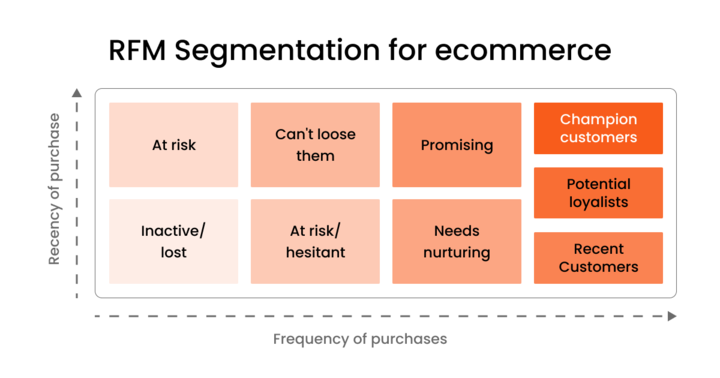
What to send to your High valued customers
For high value customers, you can send VIP offers, loyalty program invitations, and exclusive access to product launches.
What to send to your low value customers
For low value customers, you can send upselling and cross-selling emails with time-sensitive discounts to encourage repeat purchases.
What to send to your new customers
To your new subscribers, you can send personalized welcome emails based on their demographics and interests.
Tracking where the subscribers signed up, such as blogs, social media posts, or your website, can reveal your customer’s initial interest.
What to send to your inactive/about-to-churn customers
To re-engage inactive or at-risk customers, send personalized emails with exclusive offers, highlight new features/content, and ask for feedback to understand their needs and improve your service.
Related Reading: Difference between Email Segmentation and Personalization.
Use multiple segmentation criteria in one place at Retainful and launch your tailored email campaigns effortlessly.
3. Personalize Your Emails
Personalization is what makes targeted email marketing different from regular email campaigns.
Personalization in targeted email marketing involves tailoring email content and delivery to individual recipients based on their data and behavior, making the message more relevant and engaging.
You can personalize your target emails using
- Dynamic Content
- Purchase History
- Past Interactions
- Behavioral pattern
- Demographics
For instance, this is a comparison email from Shoes&Co depicting how a personalized email can be more targeted, relevant, and engaging.
Personalized greeting, email copy, visuals, and a dynamic coupon make the email more relevant to the recipient.
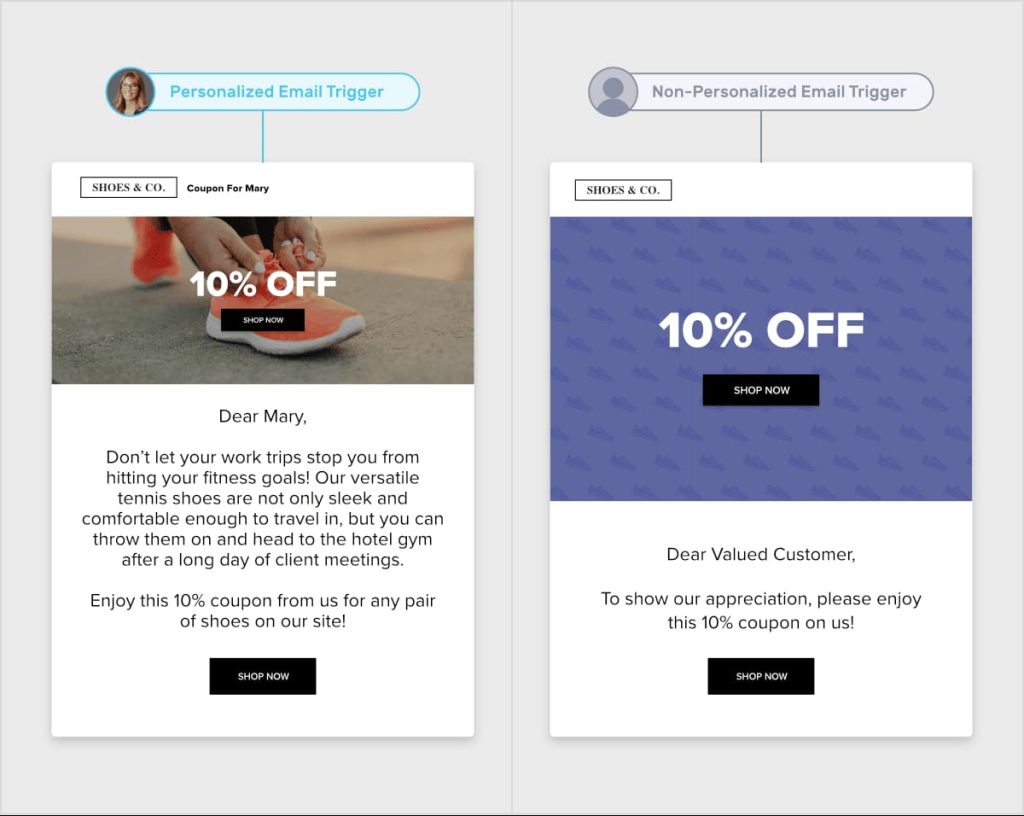
4. Create Engaging Content
Your email content should be relevant, valuable, and visually appealing to your target audience.
Here’s what to include in your email:
- Attention-Grabbing Subject Line: Create a compelling subject line that entices your audience to open the email.
- Know Your Customer: Create content that aligns with your customers’ interests and addresses their pain points.
- Clear Call to Action (CTA): Include a clear and actionable CTA that guides your audience on what to do next.
- Exclusive Offers or Discounts: Offer exclusive discounts or promo codes to make your audience feel valued and encourage them to make a purchase.
For example, you can use a personalized subject line and CTA like this:
Subject: John, Your Next Workout Gear is Waiting – Enjoy 10% Off!
CTA: Grab Your Offer Now
5. A/B Test Your Campaigns
To create the best targeted email marketing campaigns, experiment with different email elements to discover what resonates best with your audience.
A/B test different variations of elements like:
- Email Layouts
- Subject line
- CTA (Call To Action)
- Sending frequency
- Email Schedule
- Visual elements
6. Automate your Targeted Email Marketing Campaigns
Sending a personalized email to different targeted email marketing lists at the right time is a ton of work. That’s why you need to use automated targeted email marketing. With automation, you can send personalized emails based on real-time customer behavior.
In particular, online store owners can leverage automation to send timely emails based on customer behavior and to run targeted e-commerce email marketing campaigns.
7. Track & Optimize Your Campaigns
Track your email campaign metrics regularly to understand what’s working and what needs improvement.
Here are some key metrics you should keep an eye on to create the best targeted email marketing campaign.
- Open rate
- Click-through rate
- Conversion rate
- Unsubscribe rate
- Revenue generated
Use these insights to optimize your campaigns and send even more targeted emails.
Related Reading: Ecommerce Email Campaigns that Could Help You Drive Conversion.
Targeted Email Marketing Examples
We have provided the best targeted email marketing examples from big brands to show you how they have used targeted email marketing for their business.
Here are some of the great targeted email marketing examples:
- Adidas – Demographic targeted email marketing
- Starbucks – Geo targeted email marketing
- Amazon – Behavioral targeted email marketing
- Sephora – Marketed funnel based targeted email marketing
1. Adidas – Demographic Targeted Email Marketing
Adidas implements demographic-based targeted emails to make their campaigns more relevant.
They use dynamic content to display visuals that align with the recipient’s gender.
For example, it shows men’s shoes to male audiences and women’s apparel to female audiences. This personalization makes the email feel more relevant to the audience.
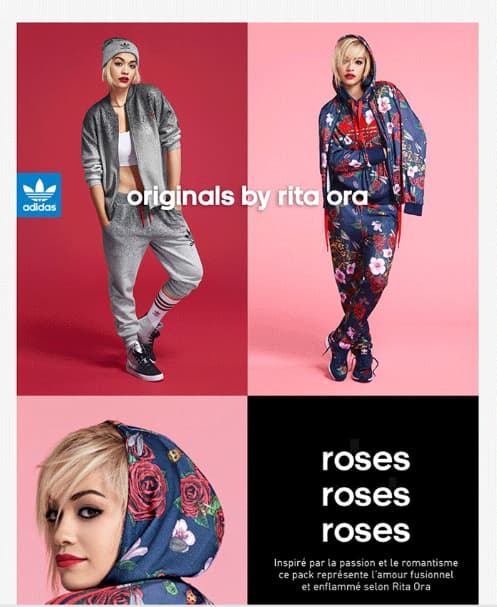
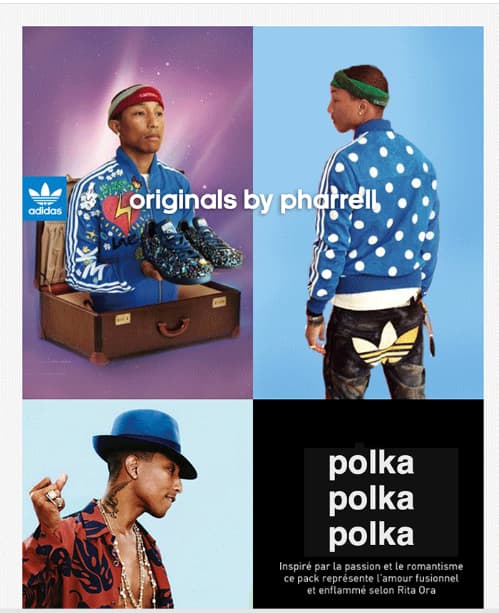
2. Starbucks – Geo Targeted Email Marketing
Geo-targeted email marketing campaigns are one of Starbucks’s effective email marketing strategies to connect with its customers. Starbucks sends promotional emails based on the recipient’s location.
For example, during winter, customers in colder regions receive emails about hot beverages like coffee or hot chocolate, while customers in warmer regions receive promotions for iced drinks.
This strategy makes the offers more relevant to the recipient’s local climate, increasing the likelihood of a purchase.
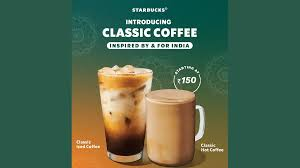
3. Amazon – Behavioral Targeted Email Marketing
Amazon is the best behavioral targeted email marketing example that uses targeted e-commerce email marketing campaigns.
They send highly personalized product recommendation emails using behavioral targeted email marketing to their target audience.
If a customer browses a product without purchasing it, Amazon follows up with a “Still Interested?” email featuring the exact product along with similar product recommendations.

4. Sephora – Marketing Funnel Based Targeted Email Marketing
Sephora uses funnel-based targeted email marketing to reward its loyal customers through its Beauty Insider Program.
They send exclusive birthday discounts, point redemption reminders, and personalized product recommendations based on previous purchases to their high value customers.
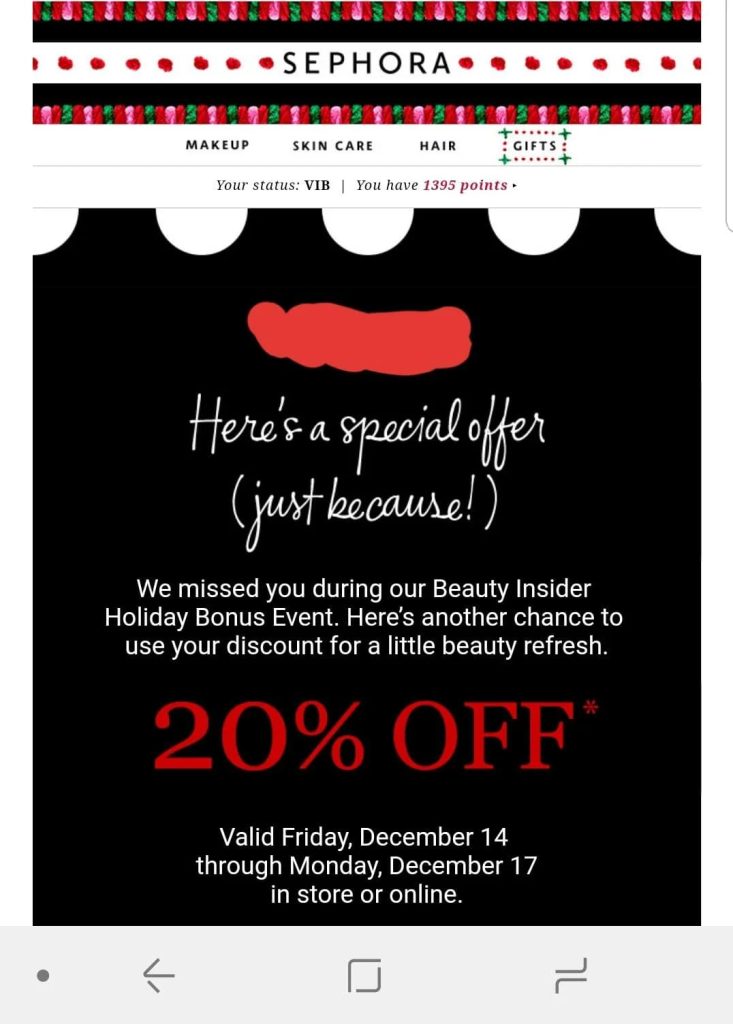
5 Best Targeted Email Marketing Services
Choosing the right targeted email marketing service is important to implement your strategy effectively. The right platform will help you automate your campaigns, segment your audience, and create personalized emails without much hassle.
Features to look for :
These are the important features to look for before choosing your targeted email marketing services:
- Segmentation – Platforms that will let you segment your audience list to send targeted emails.
- Email Automation – Automatically sends targeted emails based on customer actions like abandoned carts or sign-ups.
- Email Customization – Allows you to personalize content, subject lines, and product recommendations.
- Scalability – A Platform that allows you to send more emails as your business scales.
- Ease of use – Look for intuitive interfaces like drag-and-drop editors and ready-to-use email templates.
- Pricing – Affordable pricing plans that align with your business size and needs.
Here is a list of the top 5 targeted email marketing services
- Retainful
- Mailchimp
- Brevo
- Active Campaign
- Klaviyo
1. Retainful
Retainful helps you segment your audience list dynamically. With its simple drag-and-drop interface, pre-built templates, and email personalization options, you can easily create automated targeted email marketing campaigns and send personalized emails without any hassle.
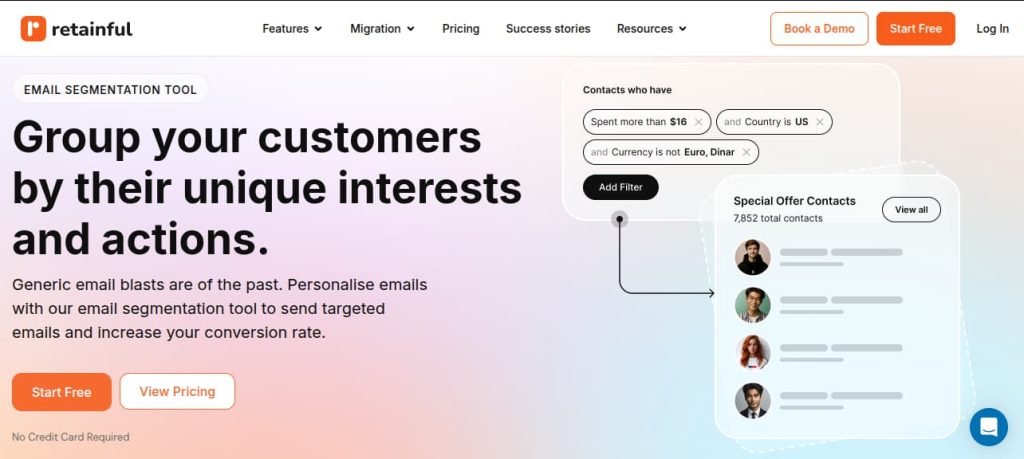
2. Mailchimp
MailChimp makes targeted email marketing simple, even if you’re just getting started. You can segment your audience, personalize emails, and even include dynamic content in your automated targeted email marketing campaigns.
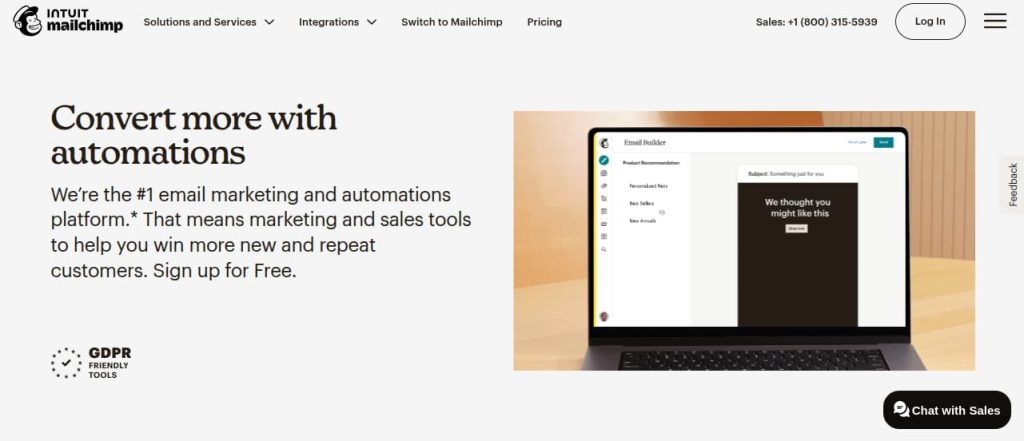
3. Brevo
Brevo provides email and SMS campaigns, basic automation features, and unlimited contact storage, with up to 100,000 contacts on the free plan. If you have a huge contact list, Brevo is a cost-effective solution for your targeted marketing campaigns.
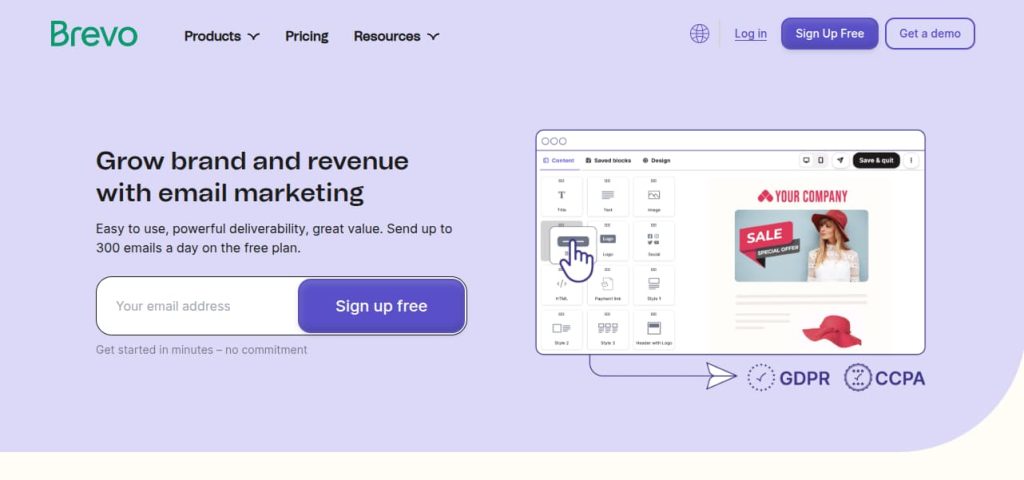
4. Active Campaign
ActiveCampaign offers advanced automation workflows, seamless CRM integration, and detailed audience segmentation to enhance personalization in targeted email campaigns. It is best suited for email marketing campaigns with complex automation requirements.
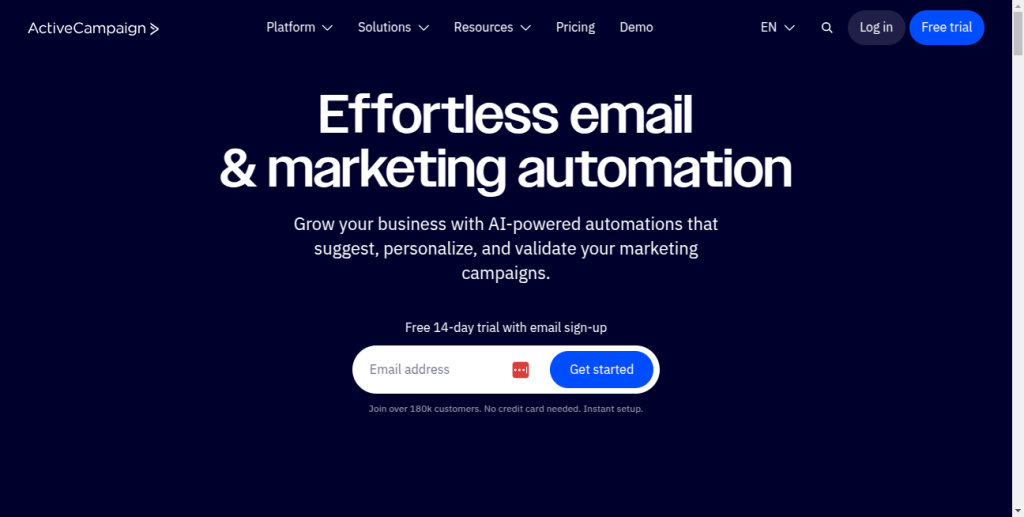
5. Klaviyo
Klaviyo specializes in e-commerce email marketing with advanced segmentation, personalized email automation, and built-in revenue tracking to measure campaign performance.
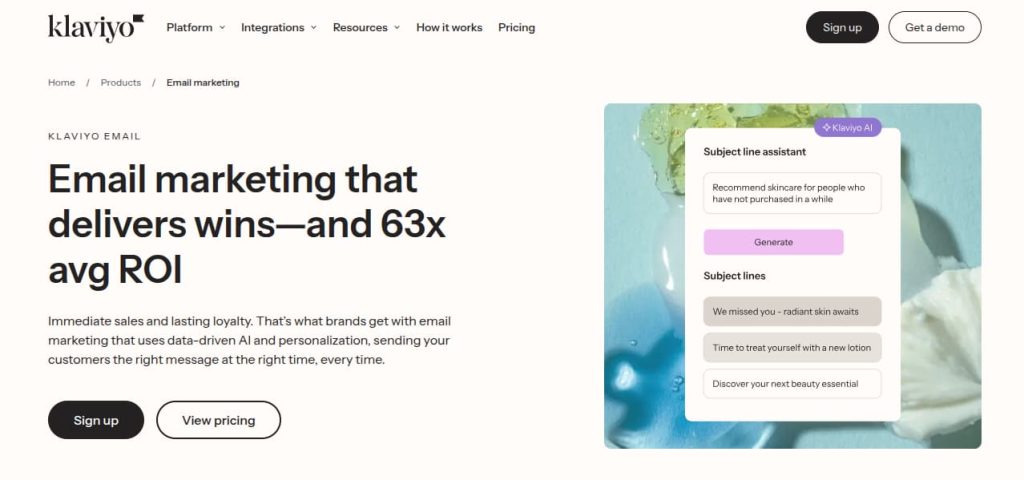
Create Targeted Email Marketing Campaigns that bring in long-term customers with Retainful’s easy-to-use email marketing tools.
Wrapping up
Targeted email marketing is about building real connections with your audience. Instead of flooding inboxes, send targeted emails that your customers want to read.
Use these tactics in your email marketing campaigns to send relevant content to your targeted audience.
- Email Segmentation
- Personalization strategies
- Targeted email marketing
You can even include the strategies used by the great targeted email marketing examples mentioned in the blog to create your targeted emails.
A best targeted email campaign will help you to achieve the following:
- Provide personalized recommendations tailored to the targeted audience lists.
- Share your brand story
- Highlight your best products
- Offer exclusive deals
The key is delivering the right message to the right person at the right time.
Also Read :
Frequently Asked Questions
In targeted marketing, businesses identify specific groups of customers and create personalized marketing campaigns tailored to their preferences, behaviors, and demographics.
Targeted email refers to personalized emails sent to a specific target audience segment. It helps businesses deliver more relevant and engaging messages.
An example of targeted email marketing is Amazon’s personalized product recommendation emails.
If a customer browses a product but doesn’t purchase it, Amazon sends a “Still Interested?” email featuring the same product along with similar recommendations.
To send targeted emails effectively, follow these steps:
1. Collect your customer data.
2. Segment your email list.
3. Personalize your email content.
Targeted email marketing is important because it helps businesses send personalized, relevant content to specific audience segments. This increases engagement and conversions.
You can collect data through sign-up forms, website analytics, purchase history, customer surveys, and tracking user behavior like email opens, clicks.
Yes, Small businesses can leverage targeted email marketing to connect with niche audiences, personalize messages, and build customer loyalty.
Common mistakes include poor audience segmentation, lack of personalization, sending irrelevant content, ignoring email analytics, and failing to optimize emails for mobile devices.
You can measure the success of your targeted email marketing campaigns by tracking key metrics like open rates, click-through rates, conversion rates, and unsubscription rates.
